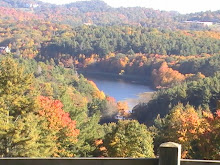John Muir and Aldo Leopold both write about nature in their own ways, and compare and contrast throughout their writings.
John Muir writes about a wind storm and uses this natural phenomenon to show his attitude to man’s dominion over nature as well as land ethic, and man’s responsibility to nature. Muir speaks of a wind storm, and all that happens during, as a true lover of nature would. He speaks of it in awe, as if the human race were just a miniscule part of nature. He speaks of the natural disasters of hurricanes and wind storms as something that is beautiful. On page 252 he says that “we are compelled to believe that they are the most beautiful on the face of the earth,” when speaking of these storms. Muir seems like he feels that man is a part of nature, and that man should adapt to nature, and not nature to man. He shows he feels this way when he climbs the Douglas Spruce on page 254-255 he describes himself clinging to the swaying tree “with muscles firm braced, like a bobolink on a reed.” He describes this as the most exhilarating experience he has ever had. This example shows his attitude toward nature and how he sees it as majestic and full of awe. He believes that men and nature all coexist and says that “we all travel the milky way together, trees and men…” on page 257. He doesn’t speak much on the subject of land ethic, but we can interpret his feelings to be those of mutuality between men and nature. We all coexist together so we should take care of nature as it does us.
Aldo Leopold feels somewhat differently that Muir, and gives the viewpoints of both the economist and the conservationist. Leopold was a professional conservationist, “a forester who early understood the concept and value of wilderness…” as described on page 376. Leopold believes that nature is the symbol of our past. He says this on page 377 when he says that the crane “is the symbol of our untamable past, of that incredible sweep of millennia which underlies and conditions the daily affairs of birds and men.” Here he is also describing his attitude to nature, and like Muir, believe that man and nature coexist, and one can not live with out the other. When the marshes were dried up and wildfires were burning up all of the water, the conservationist began to worry while the economist had the attitude of “what good is a dried up marsh?” In “Thinking Like a Mountain” (My favorite story of Leopold’s) he shows us the first time he began to think deeply into land ethic and the importance of nature. When he killed his first wolf he looked into her dying eyes and “realized then, and have known ever since, that there was something new to me in those eyes-something known only to her and to the mountain.” He said that he used to believe that the more wolves he killed, the more plentiful the deer. The opposite was true, and he explains that dear can ravage and kill a forest, in turn killing the deer because of the lack of food. He believes that like Odysseus’ girls who were property and hung, we view the land as property, as more of an economic value. He disagrees, and believes that the land is not property but says one thing that especially sums up his view of land ethic. He says on page 383 that “ethics so far evolved rest upon a single premise: that the individual is a member of a community of interdependent parts. His instincts prompt him to compete for his place in that community, but his ethics prompt him also to co-operate (perhaps in order that there may be a place to compete for.) I see this attitude to be a lot like Muirs interpreted one.
Muir and Leopold both have their viewpoints on man and nature, and the land ethics of it all. They both seem to compare more than contrast, although Leopold delves deeper into land ethics and attitude toward nature.
Subscribe to:
Post Comments (Atom)








No comments:
Post a Comment